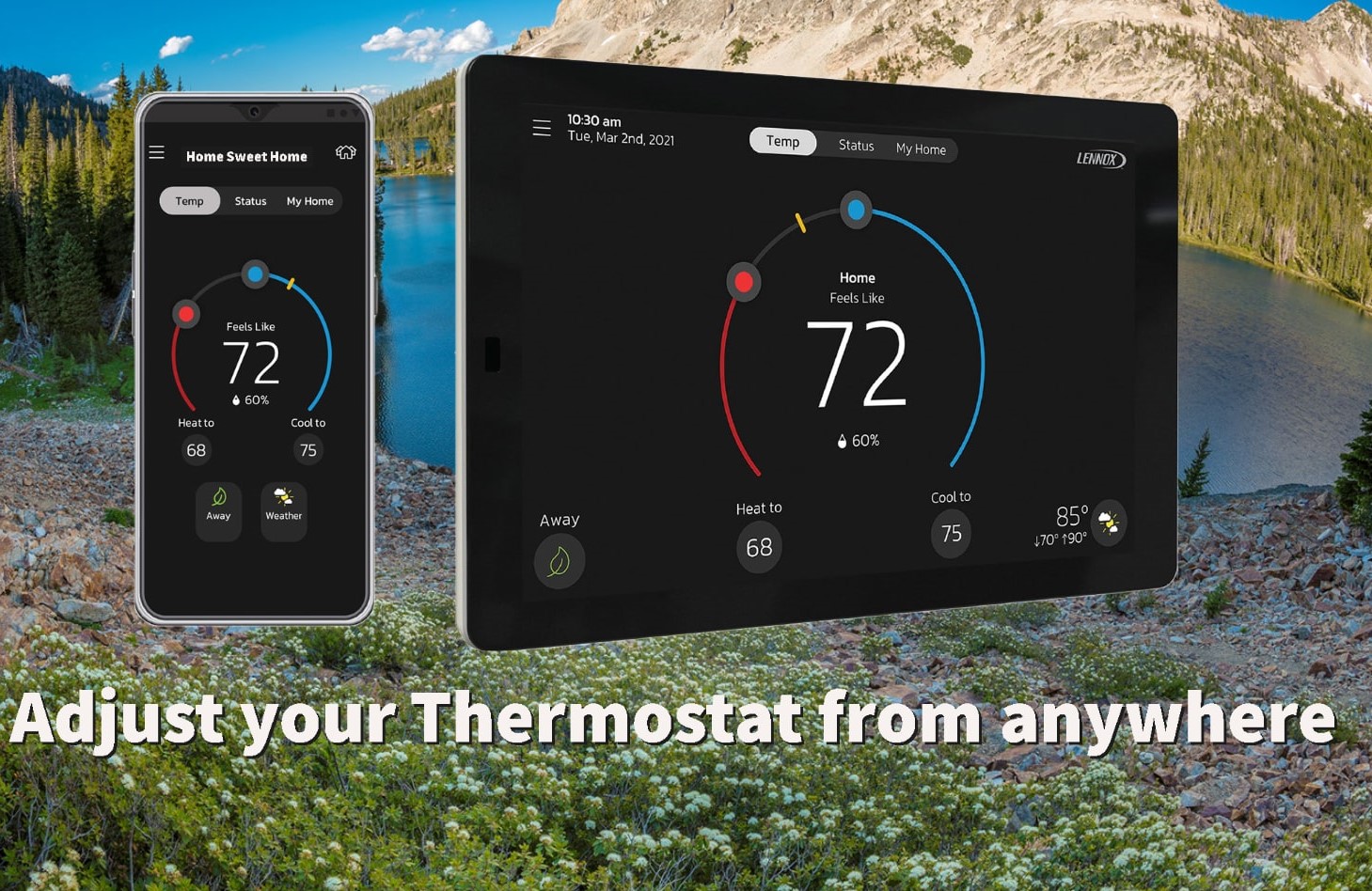Smart Thermostats

Smart thermostats are designed to provide temperature control for homes and buildings, but with advanced features that allow for increased efficiency and convenience.
Key features of smart thermostats:
Remote control: Control the thermostat from anywhere using a smartphone app.
Energy efficiency: Built-in algorithms that can learn heating and cooling habits to conserve energy.
Programmable settings: Automatically change the temperature at specific times of the day.
Compatibility with smart home devices: Compatible with other smart home devices like Amazon Alexa or Google Home for voice control.
Touchscreen display: Large, easy-to-read display that shows current temperature, temperature setting, and information about the home's heating and cooling system.
Indoor air quality: Smart thermostats can be integrated with other smart home devices, such as air purifiers and ventilation systems, to help improve indoor air quality.
Custom Notifications: smart thermostats can offer notifications through various means such as email, text messages, or push notifications to a smartphone app. These notifications are designed to provide users with important information about the status of their heating and cooling systems and help them stay on top of any potential issues.
Smart thermostats can save money on energy bills and make a home more comfortable. By automatically adjusting the temperature, they can conserve energy and reduce their carbon footprint.
A smart thermostat can save you more money than a standard thermostat in several ways:
Energy efficiency: Smart thermostats can automatically adjust the temperature based on your schedule and preferences, ensuring that your heating and cooling system is only using energy when you need it. This can help you save energy and reduce your energy bills.
Adaptive learning: Some smart thermostats can learn your heating and cooling habits over time, and use that information to optimize energy usage. This can result in even more energy savings.
Remote access: With a smart thermostat, you can control your heating and cooling system from anywhere, using a smartphone app or web interface. This means you can adjust the temperature before you get home, ensuring that your home is comfortable when you arrive.
Schedule and programming: Smart thermostats allow you to set schedules and programs for your heating and cooling system, so you can automatically adjust the temperature based on your daily routines. This can help you avoid wasting energy on heating or cooling when you're not home.
Geofencing: Geofencing is a feature that uses GPS or location-based technology to create a virtual boundary around your home. When you cross this boundary, your smart thermostat can automatically adjust the temperature to your preferred setting, providing increased energy efficiency and improved comfort.
Dual-Fuel Capability: Increases the efficiency of dual-fuel heating systems by automatically alternating between gas and electric operation.
Weather-On-Demand: Air quality conditions are offered for your local area, so you always know what's happening outside.
A smart thermostat can help you save energy and reduce your energy bills, providing a more efficient and cost-effective way to control the temperature in your home.
A smart thermostat can help improve indoor Air Quality (IAQ) in several ways:
Improved ventilation: Smart thermostats can be integrated with other smart home devices, such as air purifiers and ventilation systems, to help improve indoor air quality. For example, you can set the thermostat to automatically turn on the air purifier or increase ventilation when the air quality drops below a certain level.
Monitoring and control of temperature and humidity: Smart thermostats can monitor and control the temperature and humidity levels in your home, which can help reduce the growth of mold, mildew, and other allergens that thrive in moist environments.
Detection of potential IAQ problems: Some smart thermostats come with sensors that can detect potential indoor air quality problems, such as high levels of carbon monoxide or volatile organic compounds. When these problems are detected, the thermostat can provide an alert, helping you take action to improve indoor air quality.
Improved filtration: Many smart thermostats can be paired with air filters that remove pollutants from the air. By regularly changing the air filter and using a high-quality filter, you can help improve indoor air quality and reduce the risk of respiratory problems.
Smart scheduling: With a smart thermostat, you can set schedules for your heating and cooling system that take into account your daily routines and the presence of pets, visitors, or other factors that can impact indoor air quality.
By combining advanced features such as monitoring, control, and integration with other smart home devices, a smart thermostat can play an important role in improving indoor air quality and ensuring a healthy, comfortable, and well-ventilated home.
Our comfort advisors can help you choose the right control options for your home.
At Schmidt Heating and Cooling, we understand the importance of choosing a trustworthy and dependable HVAC company for your smart thermostat investment. This is what sets us apart from the competition:
- Satisfaction Guaranteed
- 24/7 Emergency Service
- Locally-Owned and Operated Business
- Certified Comfort Advisors
- Friendly, Professional, and Knowledgeable Technicians
When you need a new thermostat you can trust our team to take care of your needs. Contact us online or give us a call to schedule your service today.
